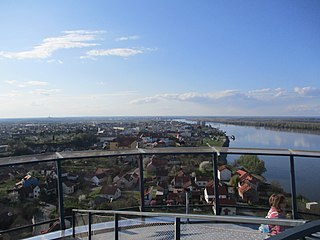
Vukovar is a city in Croatia, in the eastern region of Slavonia. It contains Croatia's largest river port, located at the confluence of the Vuka and the Danube. Vukovar is the seat of Vukovar-Syrmia County and the second largest city in the county after Vinkovci. The city's registered population was 22,616 in the 2021 census, with a total of 23,536 in the municipality.

The Republic of Serbian Krajina or Serb Republic of Krajina, known as the Serbian Krajina or simply Krajina, was a self-proclaimed Serb proto-state, a territory within the newly independent Republic of Croatia, which it defied, and which was active during the Croatian War of Independence (1991–95). It was not recognized internationally. The name Krajina ("Frontier") was adopted from the historical Military Frontier of the Habsburg Monarchy and Austria-Hungary, which had a substantial Serb population and existed up to the late 19th century. The RSK government waged a war for ethnic Serb independence from Croatia and unification with FR Yugoslavia and Republika Srpska.
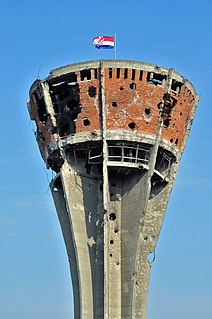
The Battle of Vukovar was an 87-day siege of Vukovar in eastern Croatia by the Yugoslav People's Army (JNA), supported by various paramilitary forces from Serbia, between August and November 1991. Before the Croatian War of Independence the Baroque town was a prosperous, mixed community of Croats, Serbs and other ethnic groups. As Yugoslavia began to break up, Serbia's President Slobodan Milošević and Croatia's President Franjo Tuđman began pursuing nationalist politics. In 1990, an armed insurrection was started by Croatian Serb militias, supported by the Serbian government and paramilitary groups, who seized control of Serb-populated areas of Croatia. The JNA began to intervene in favour of the rebellion, and conflict broke out in the eastern Croatian region of Slavonia in May 1991. In August, the JNA launched a full-scale attack against Croatian-held territory in eastern Slavonia, including Vukovar.

The Croatian War of Independence was fought from 1991 to 1995 between Croat forces loyal to the Government of Croatia—which had declared independence from the Socialist Federal Republic of Yugoslavia (SFRY)—and the Serb-controlled Yugoslav People's Army (JNA) and local Serb forces, with the JNA ending its combat operations in Croatia by 1992. In Croatia, the war is primarily referred to as the "Homeland War" and also as the "Greater-Serbian Aggression". In Serbian sources, "War in Croatia" and (rarely) "War in Krajina" are used.
The Battle of Borovo Selo of 2 May 1991, known in Croatia as the Borovo Selo massacre and in Serbia as the Borovo Selo incident, was one of the first armed clashes in the conflict which became known as the Croatian War of Independence. The clash was precipitated by months of rising ethnic tensions, violence, and armed combat in Pakrac and at the Plitvice Lakes in March. The immediate cause for the confrontation in the heavily ethnic Serb village of Borovo Selo, just north of Vukovar, was a failed attempt to replace the Yugoslav flag in the village with the flag of Croatia. The unauthorised effort by four Croatian policemen resulted in the capture of two by a Croatian Serb militia in the village. To retrieve the captives, the Croatian authorities deployed additional police, who drove into an ambush. Twelve Croatian policemen and one Serb paramilitary were killed before the Yugoslav People's Army (JNA) intervened and put an end to the clashes.
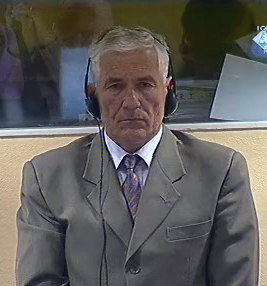
Mile Mrkšić was a colonel of the Yugoslav People's Army (JNA) in charge of the unit involved in the Battle of Vukovar during the Croatian War of Independence in 1991. He was convicted for not preventing the mass killing of 264 Croats that followed the fall of Vukovar, and sentenced to 20 years.
The Vukovar massacre, also known as the Vukovar hospital massacre or the Ovčara massacre, was the killing of Croatian prisoners of war and civilians by Serb paramilitaries, to whom they had been turned over by the Yugoslav People's Army (JNA), at the Ovčara farm southeast of Vukovar on 20 November 1991, during the Croatian War of Independence. The massacre occurred shortly after Vukovar's capture by the JNA, Territorial Defence (TO), and paramilitaries from neighbouring Serbia. It was the largest massacre of the Croatian War of Independence.

Tordinci is a village and a municipality in the Vukovar-Syrmia County in Croatia.
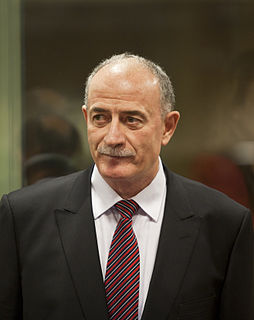
Veselin Šljivančanin is a former Montenegrin Serb officer in the Yugoslav People's Army (JNA) who participated in the Battle of Vukovar and was subsequently convicted on a war crimes indictment by the International Criminal Tribunal for the Former Yugoslavia for his role in the Vukovar massacre. His prison sentence was changed twice, from five to seventeen to ten years. He has since been ordered released by the ICTY on time served and good behavior.
The Lovas killings involved the killing of 70 Croat civilian residents of the village of Lovas between 10 and 18 October 1991, during the Croatian War of Independence. The killings took place during and in the immediate aftermath of the occupation of the village by the Yugoslav People's Army (JNA) supported by Croatian Serb forces and Dušan Silni paramilitaries on 10 October, two days after Croatia declared independence from Yugoslavia. The occupation occurred during the Battle of Vukovar, as the JNA sought to consolidate its control over the area surrounding the city of Vukovar. The killings and abuse of the civilian population continued until 18 October, when troops guarding a group of civilians forced them to walk into a minefield at gunpoint and then opened fire upon them.

The Battle of the Barracks was a series of engagements that occurred in mid-to-late 1991 between the Croatian National Guard and the Croatian police on one side and the Yugoslav People's Army (JNA) on the other. The battle took place around numerous JNA posts in Croatia, starting when Croatian forces blockaded the JNA barracks, weapons storage depots and other facilities. It formally began on 14 September; its objective was to neutralise the JNA positions in ZNG-held territory and to secure arms and ammunition supplies for the poorly equipped ZNG.
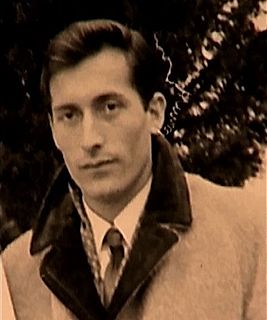
Blago Zadro was a commander of the northern part of Croatian forces in Vukovar during the Croatian War of Independence. He was killed in an attack by the Yugoslav People's Army (JNA) in the town of Borovo Naselje.
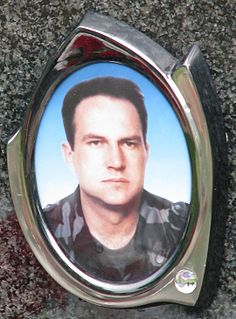
Marko Babić was a Croatian Army officer who served during the Croatian War of Independence. He is most notable for his contribution during the Battle of Vukovar, where he led the defence of Trpinjska Cesta.
The Velepromet camp was a detention facility established in the final days of the Battle of Vukovar during the Croatian War of Independence. The camp was set up by the Yugoslav People's Army (JNA), which shared control of the facility with Croatian Serb rebels. The facility, originally an industrial storage site, was located on the southern outskirts of the city of Vukovar, in close proximity to the JNA barracks. It consisted of eight warehouses surrounded by a wire fence, and was established on 16 November 1991, when the first detainees were brought there.
The Vukovar children massacre or Vukovar baby massacre refers to a well known case of propaganda during Yugoslav Wars.

The Battle of Gospić was fought in the environs of Gospić, Croatia, from 29 August until 22 September 1991 during the Croatian War of Independence. The battle pitted the Yugoslav People's Army (JNA), stationed in five barracks in the town, and paramilitary elements of the Serbian Guard against the Croatian National Guard (ZNG), police forces based in Gospić and police reinforcements from elsewhere in Croatia. Fighting in the eastern districts of Gospić, controlled by JNA forces with supporting artillery, was largely static but the balance shifted in favor of the Croatian forces following the capture of several JNA depots and barracks on 14 September. The remaining barracks were captured by 20 September leading to the expulsion of the JNA and Serbian Guard forces from the town.
The Battle of Osijek was the artillery bombardment of the Croatian city of Osijek by the Yugoslav People's Army (JNA) which took place from August 1991 to June 1992 during the Croatian War of Independence. Shelling peaked in late November and December 1991, then diminished in 1992 after the Vance plan was accepted by the combatants. Airstrikes and attacks by JNA infantry and armored units against targets in the city accompanied the bombardment, which caused approximately 800 deaths and resulted in a large portion of the city's population leaving. Croatian sources estimated that 6,000 artillery shells were fired against Osijek over the period.
Mile Dedaković is a retired Croatian Army colonel. Also known by his nom de guerreJastreb ("Hawk"), Dedaković is best known for commanding the 204th Vukovar Brigade and the city of Vukovar's defenses during the 1991 Battle of Vukovar in the early stages of the Croatian War of Independence.
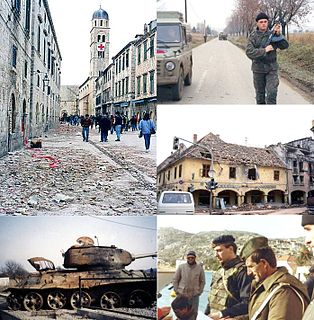
The 1991 Yugoslav campaign in Croatia was a series of engagements between the Yugoslav People's Army (JNA), the Yugoslav Navy and the Yugoslav Air Force, and the Croatian National Guard (ZNG) then the Croatian Army (HV) during the Croatian War of Independence. The JNA was originally deployed in order to preserve Yugoslavia, and the initial plan of the campaign entailed the military occupation of Croatia and the removal of the Croatian leadership elected in 1990. The JNA intervention was the culmination of its involvement in the confiscation of weapons from Croatia's Territorial Defence, and in the Croatian Serb revolt that had begun in August 1990. From that time, the JNA had been frequently deployed to form a buffer zone between the insurgents and the ZNG or the Croatian police. In effect, these JNA buffer zones often secured the territorial gains of the insurgents and led to an increasingly hostile relationship between the JNA and Croatia. The JNA campaign plan was amended shortly before the campaign to include the relief of JNA barracks besieged by the ZNG. The besieging and subsequent capture of several JNA facilities allowed Croatia to arm its previously poorly equipped military and to equip new recruits.
Operation Baranja was an aborted offensive of the Croatian Army north of the towns of Belišće and Valpovo, Croatia on 3 April 1992 during the Croatian War of Independence. The offensive quickly gained ground after the HV advanced north of the Drava River into Baranja. The defending force of the Croatian Serb Territorial Defence Force supported by the Yugoslav People's Army artillery were caught unprepared and offered light resistance.











